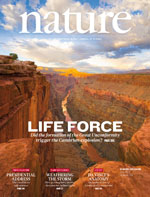导读:一个国际研究小组在新一期英国《自然》杂志上报告说,他们研究发现乳腺癌可以细分为10个亚型,这有助在将来对乳腺癌患者进行更有针对性的治疗。

英国和加拿大等多国研究人员分析了过去十多年里约2000名乳腺癌患者的癌细胞组织样本,结果显示,它们在基因层面上有不同的病因,可以将它们分为10个不同的种类,需要不同的治疗方式。
领导此项研究的英国剑桥大学教授卡洛斯·卡尔达斯说:“乳腺癌不是一种疾病,而是10种不同的疾病。”这就是为什么对乳腺癌患者使用一些通用的治疗方式时,有些患者反应良好,而另一些患者却反应较差甚至病情恶化。
卡尔达斯说,虽然这项成果还不能马上改变现在的乳腺癌治疗方式,但它为将来进行差异化治疗铺下了道路。届时,可根据患者癌细胞组织在基因层面上的病变原因设计出针对性药物和治疗方式。

The genomic and transcriptomic architecture of 2,000 breast tumours reveals novel subgroups
Christina Curtis,1, 2, 26, 27 Sohrab P. Shah,3, 4, 27 Suet-Feung Chin,1, 2, 27 Gulisa Turashvili,3, 4, 27 Oscar M. Rueda,1, 2 Mark J. Dunning,2 Doug Speed,2, 5, 26 Andy G. Lynch,1, 2 Shamith Samarajiwa,1, 2 Yinyin Yuan,1, 2 Stefan Gräf,1, 2 Gavin Ha,3 Gholamreza Haffari,3 Ali Bashashati,3 Roslin Russell,2 Steven McKinney,3, 4 METABRIC Group, Anita Langerød,6 Andrew Green,7 Elena Provenzano,8 Gordon Wishart,8 Sarah Pinder,9 Peter Watson,3, 4, 10 Florian Markowetz,1, 2 Leigh Murphy,10
The elucidation of breast cancer subgroups and their molecular drivers requires integrated views of the genome and transcriptome from representative numbers of patients. We present an integrated analysis of copy number and gene expression in a discovery and validation set of 997 and 995 primary breast tumours, respectively, with long-term clinical follow-up. Inherited variants (copy number variants and single nucleotide polymorphisms) and acquired somatic copy number aberrations (CNAs) were associated with expression in ~40% of genes, with the landscape dominated by cis- and trans-acting CNAs. By delineating expression outlier genes driven in cis by CNAs, we identified putative cancer genes, including deletions in PPP2R2A, MTAP and MAP2K4. Unsupervised analysis of paired DNA–RNA profiles revealed novel subgroups with distinct clinical outcomes, which reproduced in the validation cohort. These include a high-risk, oestrogen-receptor-positive 11q13/14 cis-acting subgroup and a favourable prognosis subgroup devoid of CNAs. Trans-acting aberration hotspots were found to modulate subgroup-specific gene networks, including a TCR deletion-mediated adaptive immune response in the ‘CNA-devoid’ subgroup and a basal-specific chromosome 5 deletion-associated mitotic network. Our results provide a novel molecular stratification of the breast cancer population, derived from the impact of somatic CNAs on the transcriptome.
文献链接:https://www.nature.com/nature/journal/vaop/ncurrent/full/nature10983.html








